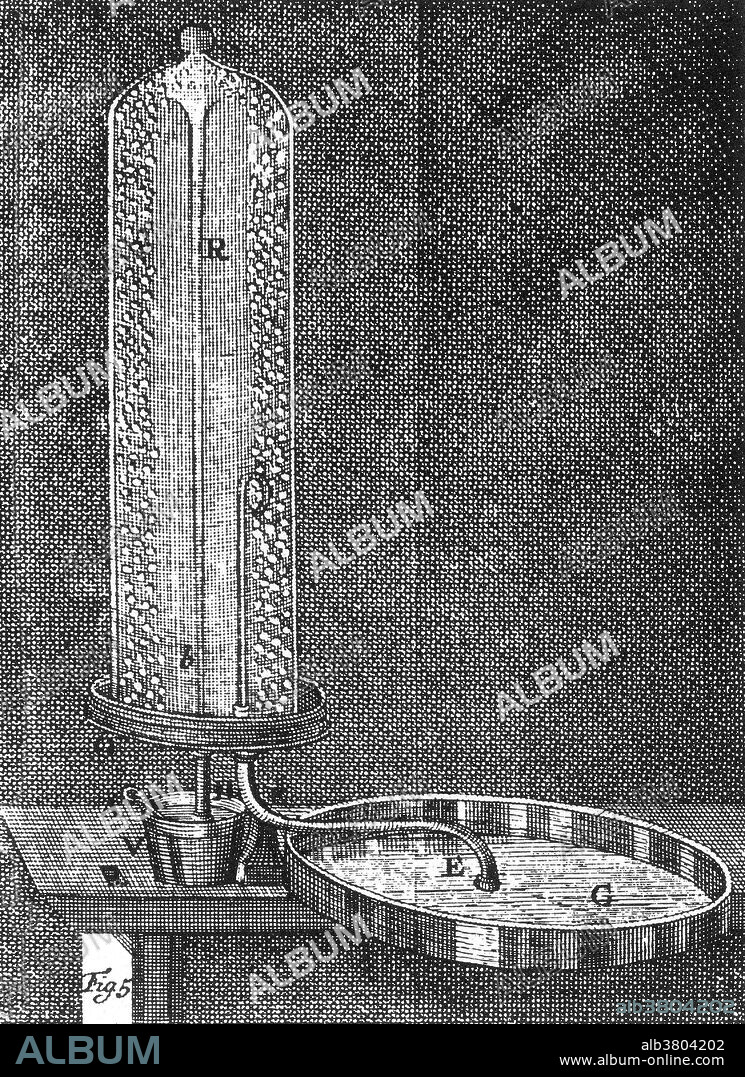alb3804202
Electrostatic generator experiment, 1700s

|
Zu einem anderen Lightbox hinzufügen |
|
Zu einem anderen Lightbox hinzufügen |



Haben Sie bereits ein Konto? Anmelden
Sie haben kein Konto? Registrieren
Dieses Bild kaufen.
Nutzung auswählen:

Titel:
Electrostatic generator experiment, 1700s
Untertitel:
Siehe automatische Übersetzung
Electrostatic generator experiment. In 1705, Hauksbee had discovered that if he placed a small amount of mercury in the glass of his modified version of Otto von Guericke's generator, evacuated the air from it to create a mild vacuum and rubbed the ball in order to build up a charge, a glow was visible if he placed his hand on the outside of the ball. This remarkable discovery was unprecedented at the time. This glow was bright enough to read by. It seemed to be similar to St. Elmo's Fire. This effect later became the basis of the gas-discharge lamp, which led to neon lighting and mercury vapor lamps.
Bildnachweis:
Album / NYPL/Science Source
Freigaben (Releases):
Bildgröße:
3166 x 4350 px | 39.4 MB
Druckgröße:
26.8 x 36.8 cm | 10.6 x 14.5 in (300 dpi)
Schlüsselwörter:
18. JAHRHUNDERT • 18. JH. • BERÜHMT • BERÜHMTE PERSÖNLICHKEIT • ELEKTRIZITAET • ELEKTRIZITÄT • ERFAHRUNG • EUROPAEER (F M) • EUROPAEER • EUROPÄER (F M) • EUROPÄER • EUROPÄISCH • EXPERIMENT • GENERATOR • ILLUSTRATION • ILLUSTRATIONS • INSTRUMENTENMACHER • NATURWISSENSCHAFTLER • NOTABEL • PROMINENZ • STROM (ELEKTROTECHNIK) • VERSUCHSAUFBAU • WISSENSCHAFT: EXPERIMENT • WISSENSCHAFTLER • WISSENSCHAFTLICH
 Pinterest
Pinterest Twitter
Twitter Facebook
Facebook Link kopieren
Link kopieren Email
Email
